Archives
-
No. 73: SACQ 2024
No. 73 (2024)South African Crime Quarterly 2024 contains an article by Manganyi et al. that outlines the lessons learnt during data collection with the South African Police Service for the third national femicide study during the Covid-19 pandemic. The paper discusses the intricacies of collecting data with SAPS and suggests ways to improve data collection and minimise the service disruption on SAPS of research impact with the police.
Hraklis Papageorgiou, Joseph Baggott and Martin Bekker examine data gathered during the #FeesMustFall movement, using a machine learning model trained on historical South African Twitter data combined with event records from a protest database. They find that these events establish a distinctive time-series pattern, suggesting a robust approach to modelling, identifying or predicting protests within South Africa. They argue that automated protest event analysis may soon provide valuable information about the actors, level of turmoil, size, duration, grievances, and motivations of protest.
-
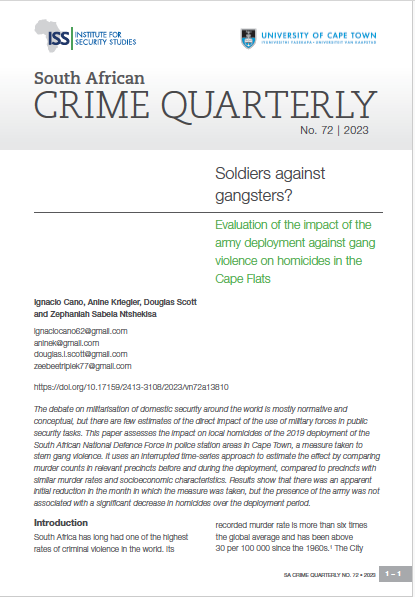
SACQ 2023
No. 72 (2023)The 2023 issue of South African Crime Quarterly features a paper by Ignacio Cano, Anine Kriegler, Douglas Scott and Zephaniah Sabela Ntshekisa that examines the 2019 deployment of the South African National Defence Force in police station areas in Cape Town to stem gang violence. The authors argue that while gang violence initially reduced, it did not decrease significantly long term.
Based on 22 months of ethnographic research in regional courtrooms in the Thohoyandou area, Sonia Rupcic examines how remand detention predisposes defendants to dismiss state-sponsored legal counsel in favour of self-representation. She finds that self-representation proved prejudicial to defendants beyond questions of legal competence, arguing that trial delays and remand detention have a synergistic relationship that thwarts the cause of justice beyond concerns with defendants’ liberty interests.
Erna Viljoen, Kerstin Tonsing and Juan Bornman show that police officers who need to take statements from persons with a communication disability face challenges relating to the transactional nature of communication, lack of resources to support communication during statement-taking, the vulnerability of complainants with communication disabilities, and police pessimism. Based on focus groups with SAPS members, they recommend that disability sensitivity training, as well as training on communication disability, be provided to police officers.
Mariksa Fourie, Philip Steenkamp, Jacqui-Lyn McIntyre and Clint Oellermann describe the current scale and nature of the illicit cigarette trade and evaluate the attempts to combat it in South Africa. The authors conclude with recommendations on measures the state, commerce and legal authorities could take to confront the problem with a reasonable chance of success.
-
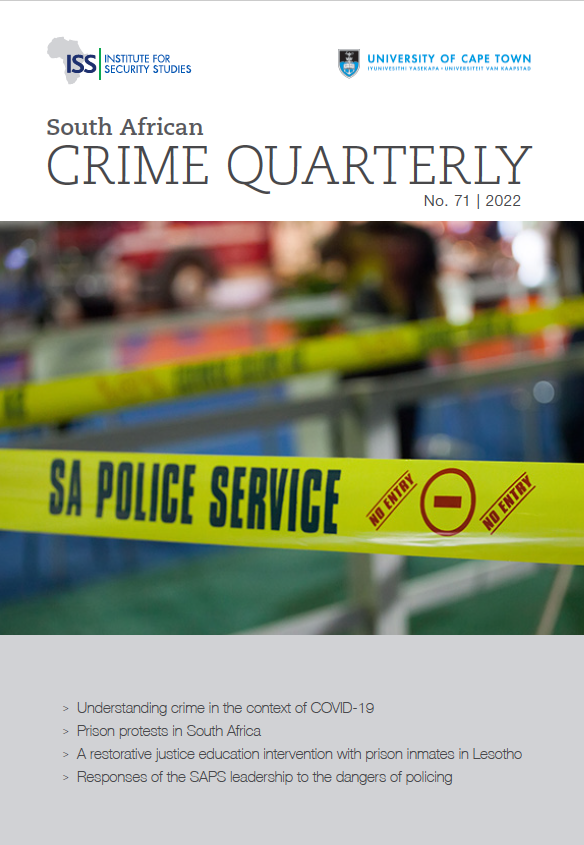
SACQ 2022
No. 71 (2022)The 2022 edition of SACQ includes an article by Ivan Henrico, Nkosana Mayoyo and Babalwa Mtshawuthat examines crime trends in Saldanha Bay Municipality under Covid. Using hotspot analysis of the SAPS crime statistics between January 2017 to June 2020, the paper shows that crime increased over the period and that criminal activities are linked to urban hubs where most people stay and work. The paper also idenfies variations in variations in crime rates during the first three months of lockdown (from April 2020 to June 2020), and shows the differences between the five towns that are clusted under Saldanha Bay Municipality.
Lukas Muntingh explores the nature and causes of prisoner protests, looking at it first from a sociological perspective and second, a rights perspective. He discusses the tensions between prisoners' rights while incarcerated, and prison administration. He argues that while prisoners have the right to protest, and can claim these rights, the enabling legislation is not only lacking but operational procedures prevent them from exercising these rights.
Ntholeng Molefi and Geoff Harris discuss the implementation and evaluation of a restorative justice education programme with prison inmates in Lesotho aimed at restoring their self-worth and dignity. The project demonstrates that the main challenges faced by ex-inmates include stigma, rejection by their families and communities and the harsh socio-economic environment. The articles shows that restorative justice education programming (translated into Sesotho and modified to suit local conditions) showed positive outcomes for the ex-inmates and their families. In reflecting on these findings, the authors highlight reasons areas of caution in terms of claims of programme success.
Gráinne Perkins exmines how senior police officers encounter and understand danger experienced by SAPS members. Although, as office bound executives, senior SAPS members rarely encounter violence to the same extent as frontline officers, they are ultimately responsible for the strategies and operations employed to prevent police exposure to such dangers. She argues that a view of senior officials' perceptions of danger may also help us to understand why the SAPS police in the manner in which they do.
Pascal Richardson, Lu-Anne Swart, Rajen Govender and Mohamed Seedat investigate contextual and situational circumstances of protest events that record injurious outcomes for civilians and examine how these differ from protests which do not record such outcomes. Using the IRIS database, they found that protest-related injuries were more frequent during the late-2000s than the 2010–15 period; protest location was not a significant predictor of protest injury; protests which recorded arrests and damage to property were more likely to report injurious outcomes; and the addition of an aggressive police response was significant in determining protestor injury outcomes. Their findings have implications for public policing strategies, highlighting the role of different modalities of police response in the mitigation or escalation of injuries at protest events.
Sheena Swemmer examines how developing domestic violence laws to include and protect individual companion animals in the home may prevent violence against other victims. The article shows that an intersection of violence exists in the home between women, children and companion animal and that protecting specific victims of violence (such as companion animals) can potentially act as a mechanism that can protect all victims from future or persisting violence.
Samuel Fikiri Cinini and Sazelo Mkhize examine xenophobic violence through the lens of strain theory, and explores possible solutions to combat violence against foreign nationals in South Africa. Based on interviews with foreign nationals living in KwaZulu-Natal, the findings suggest the need to address poverty, socioeconomic integration, community participation, and skills in order to reduce strain and build social cohesion.
Ropafadzo Maphosa analyses the Constitutional Court’s decision in Tshabalala v S; Ntuli v S 2020 2 SACR 38 CC, concluding that while the decision is undoubtedly a step in the right direction towards rape law reform in South Africa, questions can be raised about the court’s decision to extend the application of the common law doctrine to common law rape. The article argues that the court could have highlighted the power dynamics at play during the commission of rape without denouncing instrumentality as a central element of the crime.
-
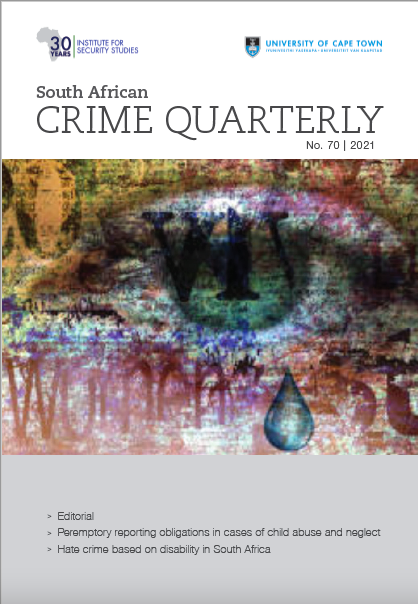
SACQ 2021
No. 70 (2021)The 2021 edition of South African Crime Quarterly is continuously published.
The edition includes an article by Mildred Bekink adressing controversial mandatory reporting requirements in cases of serious child maltreatment encountered in the course of their work. The article considers whether South African law adequately provides for the liability of those compelled to report child abuse but who fail to do so, why mandated reporters fail to report abuse, and how South Africa’s mandatory reporting rules should be amended to better serve their purpose.
Willene Holness considers whether South Africa should introduce disability hate crime as a new substantive offence or as a penalty enhancement of existing crimes. This article argues that existing laws on sexual offences, domestic violence, harassment, and unfair discrimination should be strengthened, and research should be conducted to identify the appropriate initiatives to prevent and attend to disability hate crime by and with persons with disabilities. She argues that creating a substantive hate crime based on disability has symbolic value, but can only meet this goal if existing challenges to full and meaningful participation by persons with disabilities are addressed.
-
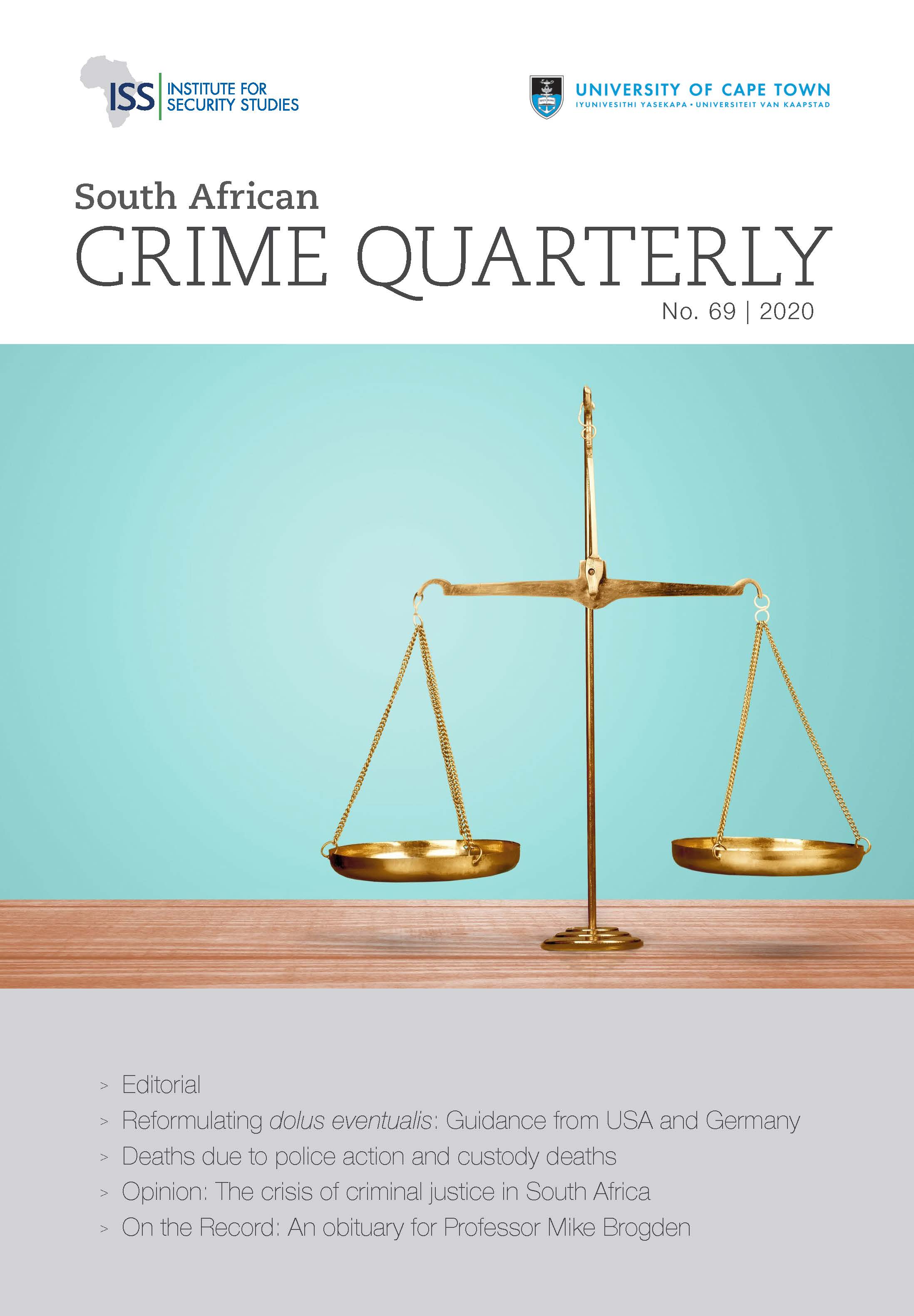
SACQ 2020
No. 69 (2020)From 2020 onwards, articles in South African Crime Quarterly appear in a single edition per year, published on a continuous publication model.
The collection includes an article by Kirstin Hagglund and Franaaz Khan on the so-called legal 'enigma' of dolus eventialis. Using German and American law for guidance, the authors examine the test for dolus eventualis in the case of murder and determines whether it can be more clearly distinguished from culpa, in the case of culpable homicide.
Shimon Barit, Lorraine du Toit-Prinlsoo and Gert Saayman examine deaths due to police action and deaths in custody through a retrospective descriptive audit of cases admitted at the Pretoria Medico-Legal Laboratory. Compared with other countries, the authors find a high number of firearms-related fatalities in the deaths resulting from police action, and an absence of deaths due to conditions like excited delirium or deaths associated with illicit drug intoxication. They argue that there is a need for for objective, impartial and competent medico-legal investigation into deaths of this nature.
Hennie van As highlights the threat that South Africa's marine living resources face from international organised crime syndicates in conjunction with local fishers, eroding the rule of law and contributing to the proliferation of gangsterism. He argues that SAPS are not using the full power of the law to address poaching of marine resources and concludes that an appropriate response requires the full might of the law and the improvement of national fisheries resource management to ensure that local communities benefit.
Delano van der Linde discusses the criminalisation of gang activity under the Prevention of Organised Crime Act 121 of 1998. He argues that the Act creates the ‘super-criminalisation’ of gang activity given the preexistance of similar common law and statutory measures to deal with these crimes and discusses whether there is sufficient basis to argue for the additional responsibility of gang leaders, which is currently left uncovered by the Act.
Sheena Swemmer presents evidence from a set of 102 rape cases in South Africa, showing how prosecutors and presiding officers problematically use evidence of previous sexual history during rape trials, despite the protections to the contrary. Providing examples from cases, the author argues that comprehensive training for prosecutors and presiding officers to address the social context of rape, gender stereotyping and rape myths, as well as on the questioning of witnesses can help to remedy the problem. She argues that the prejudiced and biased practices in the courts continue to undermine the credibility of the complainant.
Hennie van As and Deon Erasmus write that people who pay admission of guilt fines often think that the fine finalises the judicial process with no criminal record, but later discover with shock that they in fact have a criminal record, with severe consequences. Their article examines the consequences for a person who pays an admission of guilt fine, investigates whether there is a duty on Legal Aid South Africa to provide legal assistance in these matters and whether an administrative infringement process should be investigated.
Fatima Osman examines the Traditional Courts Bill (B1B-2017), which omits the so called 'opt-out clause' and provides that individuals are bound to attend a traditional court when summoned. This conflicts starkly with the notion of customary law as a voluntary and consensual system of law. This article argues that compelling individuals to attend a traditional court may be unconstitutional for unjustifiably infringing the rights to culture, a fair trial and equality.
Edwin Cameron discusses what he terms a controversial and often overlooked crisis in the criminal justice system – the minimum sentencing regime. He argues that the minimum sentencing regime is not well-suited to curbing crime and making South Africans safe, but instead is a misdirected, hugely costly and ineffective way of punishing criminals and dealing with crime.
Elrena van der Spuy pays tribute to Mike Brogden, who passed away in 2019. Brogden's work on crime, criminal justice and policing in the context of social history shaped converstations on police reform and the field of criminology in South Africa.
Anine Kriegler interviews Shaun Shelly about recent developments in South African Drug Policy in the wake of the 2018 Constitutional Court judgment decriminalising personal possession of cannabis, and the subsequent Cannabis for Private Purposes Bill. Shaun is the founder of the South African Drug Policy Week and is the drug policy lead at TB HIV Care.
Sipho Mzakwe analyses the case of Social Justice Coalition and Others v Minister of Police and Others, which found that that the distribution of police personnel in the Western Cape unfairly discriminated against black and poor people on the basis of race and poverty. As the first case in South Africa recognising poverty as a discrete ground of discrimination, the judgment marks a significant development in the country’s equality rights jurisprudence. The case also has profound implications for the system of allocating police resources in that province, and potentially across the country.
-
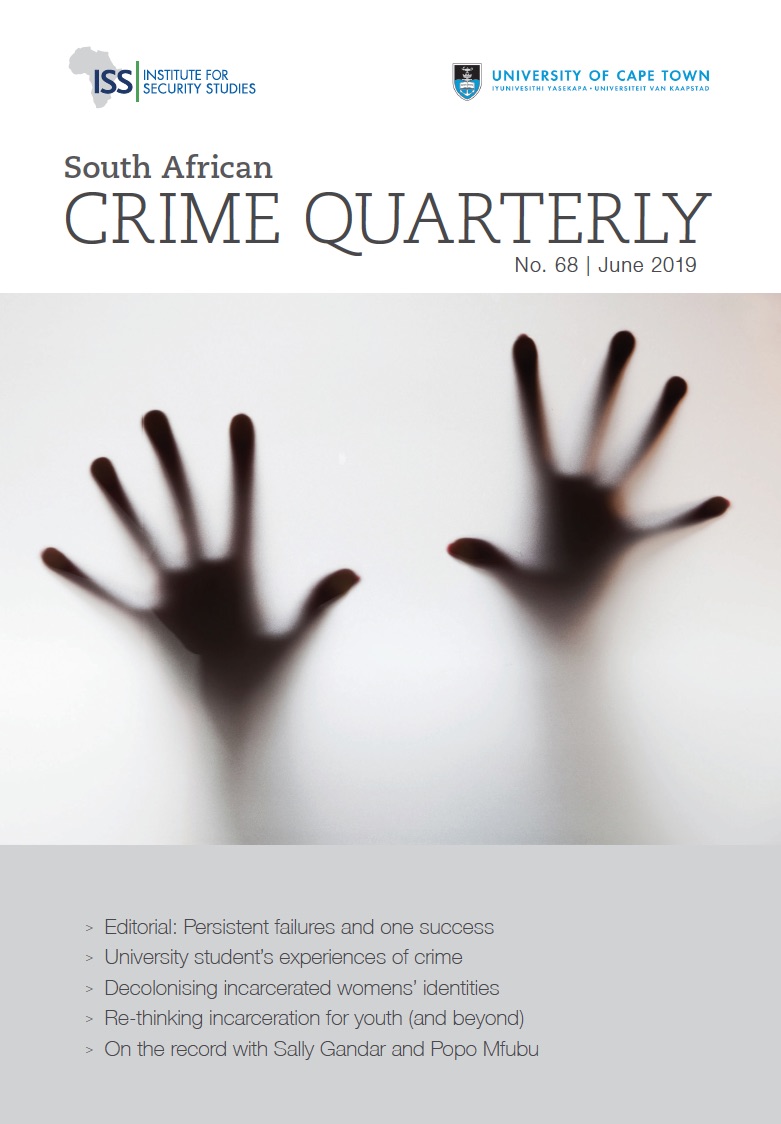
June 2019
No. 68 (2019)Eleanor Ross and Shahana Rasool examine the experience of crime among students at a large urban university in Gauteng. Using interview data, the article shows that, consistent with routine activity theory, the students appeared to be vulnerable targets, who were preyed on by motivated offenders under conditions of a lack of guardianship. As cognitive behavioural theory would predict, the incidents had profound psychological, financial and academic consequences for the students, who endeavoured to cope by adopting a variety of cognitive and behavioural strategies. The authors argue that the recommendations for enhancing guardianship on the part of university protection services and police, coupled with self-protection strategies on the part of students, can potentially reduce the risks of students becoming targets of criminal offenders.
Nontyatyambo Pearl Dastile and Biko Agozino highlight the fact that African women’s crime and incarceration has been predominantly understood using Western theoretical frameworks, thereby missing an important opportunity to develop an African centred epistemology on the topic. Based on interviews with 55 incarcerated women, the article argues that these women’s experiences of womanhood in the criminal justice system are shaped by race, gender and class which produce different forms of subjectivities and embodied selves. The authors show how the women do not have fixed identities given differences across race, ethnicity, class, religion, sexuality, nationality and (dis)ability, and how particularly racialised, gendered and class inequalities impact their identities, positions and their own modes of survival, as well as those of their children.
In their comment and analysis piece, Lisa Marqua-Harries, Grant Stewart and Venessa Padayachee argue that South Africa urgently needs to rethink crime and punishment, especially with youth. The crisis of the country’s high crime rates, recidivism and overburdened criminal justice system show that the time is right for a radical rethinking of the way we respond to the problem of crime and punishment, and the authors point out that simply ‘adopting a few well-meaning tweaks to a broken system’ falls well short of the kind of paradigm shift that is required. Instead, they argue that the system should be completely reformed into one that is trauma-informed, infused with an ethos of restorative justice, and that emphases community-owned interventions to respond to, and reduce the crime problem. The article presents a number of proposals and recommendations towards implementing a more effective criminal justice system based on these principles.
In ‘On the record’ Sally Gandar, the Head of Advocacy and Legal Advisor for the Scalabrini Centre, and Popo Mfubu, an attorney at the Refugee Rights Unit, talk to Kelley Moult about a recent judgment on refugee rights that was handed down by the Western Cape High Court on 19 June. The order, which was made after successful negotiations with the Department of Home Affairs (DHA/The Department) means that wives, husbands, children and other dependents of asylum-seekers and refugees are now able to document themselves in South Africa as ‘dependents’ of the principle asylum applicant in a process commonly known as ‘family-joining’, ensuring their rights to family unity and dignity in South Africa.
-
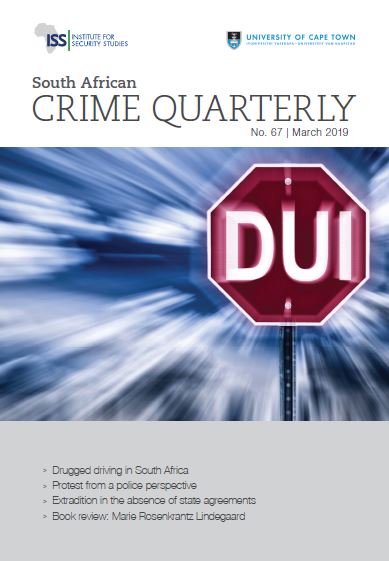
March 2019
No. 67 (2019)Jade Liebenberg, Lorraine du Toit-Prinsloo, Gert Saayman and Vanessa Steenkamp address the admissibility of these kinds of tests in their article entitled Drugged driving in South Africa: An urgent need for review and reform. The authors highlight that while it is common practice in South Africa to test drivers for alcohol levels, testing for additional substances (like drugs of abuse) is rarely performed. Current legislation only prohibits driving under the influence of alcohol and a ‘drug having a “narcotic” effect’ which excludes several impairing psychoactive drugs which are not classified as narcotic substances. The authors discuss issues and/or limitations that affect the detection of drugged driving and propose revisions of the National Road Traffic Act to include a comprehensive statutory definition and detailed provisions for drug testing to deter impaired driving.
The policing of protest has been a regular feature on the pages of South African Crime Quarterly since our December 2017 special edition. Heidi Brooks adds to this conversation by providing an account of an often-silent constituency: the police who are tasked with the dual obligation of ensuring the safety and security of communities on the one hand, and protecting democratic rights and freedoms on the other. Brooks examines protest from the perspective of rank and file officers in the South African Police Service (SAPS) and shows not only the importance of recognising bottom-up perspectives in constructing appropriate responses to protest, but the complexity of SAPS members’ own identities as both officers and citizens. She shows how, for many officers, protest seems to straddle their police and private lives, conferring on them a duty to enforce law and order, while experiencing the shortcomings of democracy themselves.
Crystal Mokoena and Emma Lubaale discuss extradition where states do not have extradition treaties with one another. State sovereignty dictates that states exercise authority over all persons and things within their territories, including people who are suspected of committing or charged with crimes in foreign states. International law generally imposes no obligation to surrender individuals suspected of or charged with committing crimes in foreign states and as such, states are increasingly ratifying international treaties mandating cooperation to ensure that individuals responsible for certain categories of crimes are brought to justice. Mokoena and Lubaale discuss whether, in cases where there are no treaties to provide for extradition, states can rely on the United Nations Convention Against Corruption (UNCAC) to extradite individuals for corruption-related crimes.
Irvin Kinnes reviews Marie Rosenkrantz Lindegaard’s book Surviving gangs, violence and racism in Cape Town: Ghetto Chameleons published by Abingdon: Routledge Advances in Ethnography in 2017. Kinnes concludes that Ghetto Chameleons provides its reader with a new way of seeing and understanding the current gang discourse by showing how young men in gangs on the Cape Flats do, how they associate, and how they use mobility to move and change their cultural repertoires in gang and suburban spaces. A deep dive longitudinal ethnography undertaken with 47 young men, the book shows us that gangsters are much more than just gangsters: not homogeneous, mobile, and with perspectives about themselves that they use flexibly, depending on their environment. Kinnes concludes that the book is required reading for any scholar of crime and mobility, and for those interested in exploring the links between gangs, cultural repertoires and mobility.
-
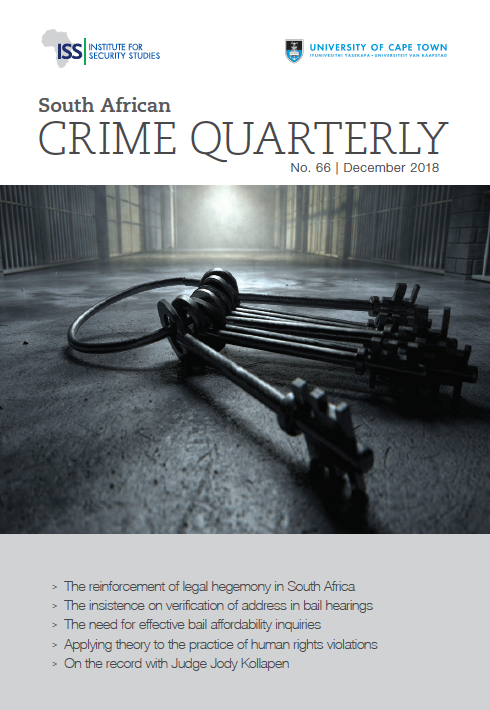
December 2018
No. 66 (2018)This special edition, guest edited by Nontsasa Nako from the University of Johannesburg, addresses the issue of decolonizing prisons by confronting both the day-to-day function of the prison and also wider impact of imprisonment on various communities in South Africa.
Thato Masiangoako examines the frames of rationalisation employed by migrants and student and community activists, who were victims of police violence due to their perceived activist or migrant status. Her article helps us understand how enduring cultural, social and institutional histories shape popular perceptions and may account for ‘the enduring nature of prison’, despite their experiences of unfair detention.
Palesa Madi and Lubabalo Mabhenxa show how the insistence on verification of address in bail hearings makes it difficult for the poor and marginalised to be released on bail in South Africa, where it is not uncommon for people to lack fixed homes. The authors conclude that with the remand detainee population so high in South African prisons, the human rights instruments should be utilised to bring South Africa in line with international human rights law.
Untalimile Crystal Mokoena and Emma Charlene Lubaale argue that through bail, or verification of address as a condition for granting bail, remand conditions, as they stand, create unequal access to justice. These authors argue that bail affordability is a paramount consideration if we want to ensure that there is equality before the law and that the dignity of the indigent accused is protected.
Anthony Kaziboni’s piece on the Lindela Reparation Centre uncovers the crude manipulation of social problems and abuses at the Centre. Drawing on Giorgio Agamben’s concept of ‘bare life’ described in Homo sacer: sovereign power and bare life, Kaziboni follows media reports on Lindela over a period of 18 years to identify what he terms ‘xenophobic biopower’, wherein immigrants detained at the centre are presented as negatives in South Africa. He argues that when the detained immigrants are constituted as exceptional, and when their rights are suspended due to ‘illegality’, all manner of violence against them is permissible.
Judge Jody Kollapen suggests in ‘On the Record’, that decolonisation is a broad concept, and the high rate of crime places undue focus on crime and punishment rather than on the various factors that produce social malaise. The papers in this volume help in expanding our knowledge and might ultimately guide us towards the decolonisation of institutions such as prisons.
This issue was made possible by funding from the National Institute for the Humanities and Social Sciences Working Group Fund.
-
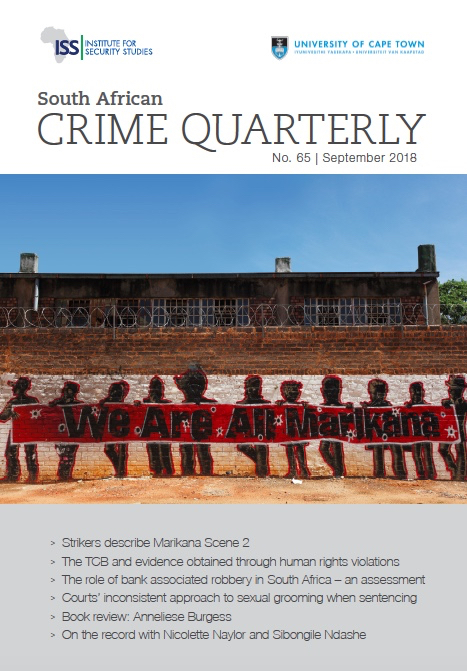
September 2018
No. 65 (2018)David Bruce analyses statements from the injured and arrested strikers from the Scene 2 massacre at Marikana, as well as the circumstances in which they were taken, to interrogate the assertion that strikers were shot by police while surrendering or injured. Bruce argues that, taken as a whole, the statements are a reliable source that suggest that some of the strikers at Scene 2 where indeed shot while surrendering.
Robert Doya Nanima extends the conversation on the latest version of the proposed Traditional Courts Bill, analyzing the admission of evidence obtained through human rights violations. Nanima finds that the Bill does not properly provide a satisfactory mechanism to evaluate evidence in criminal cases before it is admitted, and therefore doesn’t safeguard against over-zealous prosecution by the State and ensure human rights protections for accused persons.
Mahlongonolo Thobane and Johan Prinsloo discuss “bank associated robberies” – robberies (or attempted robberies) of cash that are committed against a bank client while en route to or from a bank or ATM. A relatively unknown phenomenon in public discourse on crime in South Africa, these robberies are of particular concern to the banking industry and criminal justice practitioners due to their violent, traumatic nature and dramatic increase that put the general public at risk. Thobane and Prinsloo argue that these crimes increase perceptions about the increasing levels, and violent nature of crime in South Africa which place a huge burden on the criminal justice system.
Nicole van Zyl considers whether evidence of sexual grooming influences the decisions of South African courts when passing sentence on offenders who have been found guilty of sexual assault or rape of children. The article argues that evidence of grooming should play a more important role in sentencing decisions, providing context in terms of the nature and impact of the crime that the court is asked to consider.
Elrena van der Spuy reviews Anneliese Burgess’s book, Heist! South Africa’s Cash-In-Transit Epidemic Uncovered. She concludes that the book is ‘riveting and troubling reading’ that brings a ‘disciplined inquiry to a complex issue of organised criminality’that sheds light on the connections between the illicit and licit, and the interplay of structure and agency that enable this kind of criminality.
On the Record presents a conversation between Nicolette Naylor (Director, Ford Foundation for Southern Africa) and Sibongile Ndashe (Executive Director: The Initiative for Strategic Litigation in Africa) on the role of the law in responding to sexual harassment in the workplace.
-
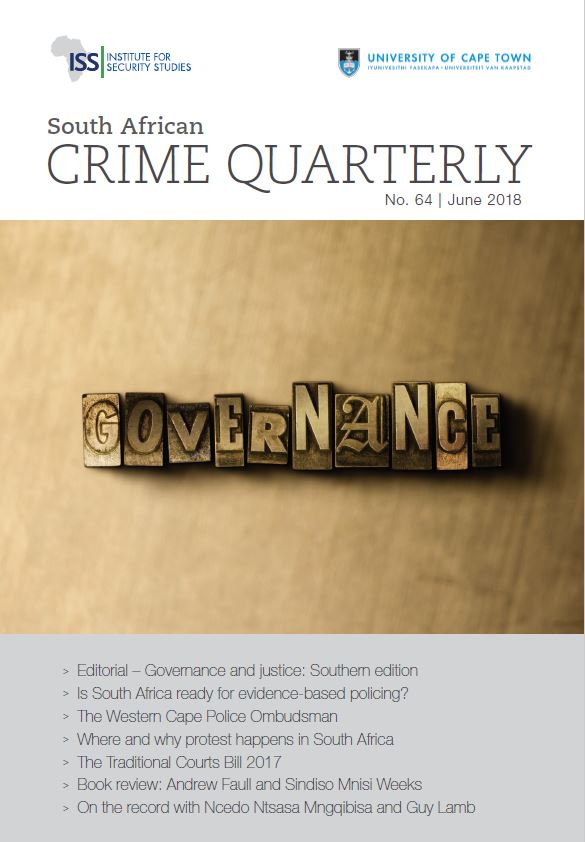
June 2018
No. 64 (2018)Each of the articles in the volume touch on questions of governance: by addressing how we use and assess evidence-based research aimed at improving policing practice; looking at the role and performance of the Western Cape Police Ombudsman; examining how and where protests focused on weak or absent governance take place; and unpacking the latest version of the Traditional Courts Bill, which is before Parliament (after two previous failed attempts) and which aims to regulate the customary justice environment.
Gareth Newham and Brian Rappert’s article, Policing for impact: Is South Africa ready for evidence-based policing? reflects on the ways in which research aimed at improving operations has realised its potential to shape policing in practice. They document a shift towards ‘greater engagement and collaboration with partners external to the police on research and data’, and argues for dedicated research partnerships that could ‘better enrich SAPS exposure to new knowledge and interventions’.
Lukas Muntingh reflects on the office of the Western Cape Police Ombudsman, and looks at its powers and performance since its inception. Muntingh finds that the body faces a number of challenges, including a ‘tiny’ budget, small staff, limited capacity to investigate, and low levels of confidence in its independence and effectiveness in addressing the poor policing and police-community relations that are evident in the province.
Lizette Lancaster presents data from the Institute for Security Studies’ Protest and Public Violence Monitor (PPVM) in her article, Unpacking discontent: Where and why protest happens in South Africa. The data shows that, contrary to prevailing public narratives, protests in this period have most often been related to industrial strike action, rather than service delivery concerns, and only just over half (55%) have been classified as violent. Taken as a whole, the PPVM data shows how wide-ranging protest grievances are, and how geographically widespread they are.
Fatima Osman’s article, Third time a charm? The Traditional Courts Bill 2017, looks at the latest version of the Bill and asks whether it sufficiently addresses the fundamental objections to previous versions, and the public outcry and sustained pressure from civil society organisations that ultimately scuppered its passage. Osman finds that these concerns – largely centred around the gender composition of the courts and women’s participation in dispute resolution processes, the centralisation of power in traditional leaders, and the professionalisation of courts – have been attended to in some measure in the new Bill, but that critical issues warrant further attention.
Bill Dixon reviews two books for this issue of SACQ: Andrew Faull’s ethnography about the working lives and professional identities of the South African Police Service members entitled Police work and identity: a South African ethnography; and Sindiso Mnisi Weeks’s in-depth exploration of what she terms ‘vernacular dispute management forums’ in Msinga in rural KwaZulu-Natal, called Access to justice and human security: cultural contradictions in rural South Africa.
‘On the Record’ discusseS the in-the-field realities doing of doing a randomised household survey with Guy Lamb and Ncedo Mngqibisa from the Safety and Violence Initiative at the University of Cape Town.
-
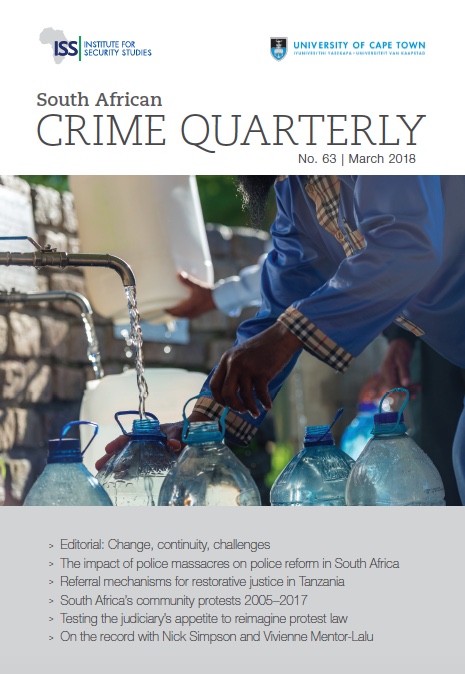
March 2018
No. 63 (2018)The articles in the March 2018 edition of SACQ illustrate or address change, justice, representation and response in criminal justice in South Africa and beyond. The articles by Guy Lamb and Ntemi Nimilwa Kilekamajenga ask how systems and agencies learn from periods of crisis. Lamb focuses on massacres perpetrated by the police in South Africa, and asks what impact these have had on changing the police organization. Kilekamajenga addresses the crisis of overburden and overcrowding in the Tanzanian criminal justice and prison systems, and asks whether this provides a moment to consider whether restorative interventions offer promise in resolving the problem.
Peter Alexander, Carin Runciman, Trevor Ngwane, Boikanyo Moloto, Kgothatso Mokgele and Nicole van Staden draw our attention to the frequency and turmoil of community protests between 2005 and 2017, and challenge us to reconsider the ways in which protest is framed as violent, disruptive and disorderly, and how we measure and represent it in the media and elsewhere.
Jameelah Omar provides a case note on the Social Justice Coalition’s constitutional challenge of provisions of the Regulation of Gatherings Act, which criminalizes the failure to provide notice of a gathering of 15 or more protesters. This case note discusses this significant judgment that declared these provisions of section 12(1)(a) of the Act unconstitutional.
Two scholar/activists, Nick Simpson and Vivienne Mentor-Lalu, discuss the Water Crisis and its impact on questions of vulnerability, risk and security in “On the Record”, illustrating our society’s challenges increasingly touch questions about safety and security, and of how the nature of our responses (both in terms of who is able to respond effectively, and what that response looks like) visibilise questions about who benefits and who is left behind.
-
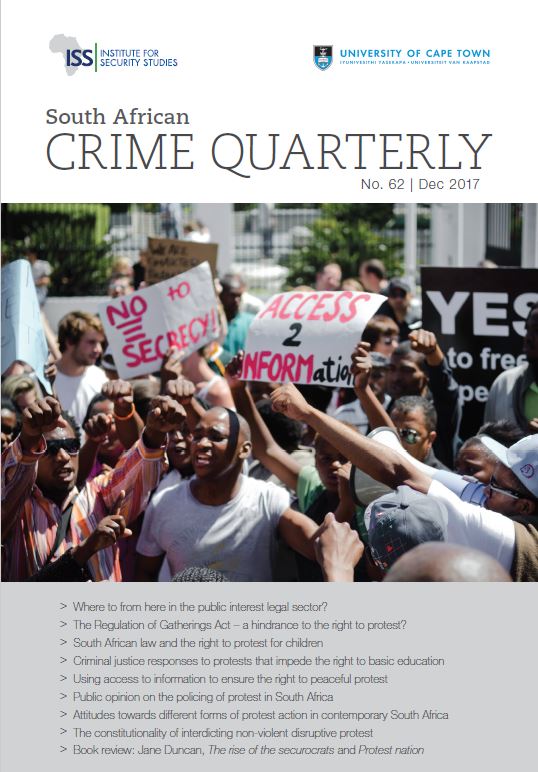
December 2017
No. 62 (2017)This issue of South African Crime Quarterly is a special issue focusing on protest. It is guest edited by Kelley Moult of the Centre for Law and Society at the University of Cape Town.
Articles in this edition illustrate the ways that academics, activists, lawyers and practitioners are engaging with questions of protest and response. Two articles address the law on protest. Chamberlain and Snyman survey the protest landscape through the lens of the public interest legal sector, and question, through the experience of Right2Protest, the ways in which court processes are being used as tools with which to quash protest activities. Omar uses the Social Justice Coalition’s challenge to the Regulation of Gatherings Act (RGA) to highlight the controversies around the Act’s regulatory provisions.
Two articles focus on protest related to the right to basic education. Ally argues that the current legal framework on protest fails to protect and enable children’s right to protest, and uses the case of Mlungwana and Others v State and Others to show how the criminalisation of peaceful protest not only violates the state’s responsibility but also fails to take into account the best interests of children. Focusing on the South African Schools Act, Skelton and Nsibirwa show tensions between the right to protest and to basic education. Problematizing the implementation if provisions that create criminal accountability in the context of protest (including parents’ decisions to keep children out of school), they argue that holding protesters accountable under criminal law may be desirable, but that the proposed amendments to the Schools Act do not resolve these practical tensions.
Mukumba and Abdullah use a series of Promotion of Access to Information Act (PAIA) requests to municipalities to test how easily accessible information is on where and how to submit a notice of gathering, as required by the RGA. They show that information is scarce, and compliance uneven across the country, finding that this amounts to active resistance by government to enabling the right to protest.
Two research articles look at public opinion on protest. Roberts et al., examine views of police performance in dealing with protests, finding that this is negative on the whole, and that roughly a third of South Africans feel that the police are never justified in using force in these situations. Bohler-Muller et al., focus on patterns of support for different forms of protest action across various socio-demographic and geographic variables. Surprisingly, the authors find no considerable differences across age, gender, race and class in the public’s support for protest, although people are more likely to support protest if they think it will be successful.
The case note by Abdool Karim and Kruyer analyses Rhodes University v Student Representative Council of Rhodes University, and Bond reviews Jane Duncan’s The rise of the securocrats and Protest nation.
-
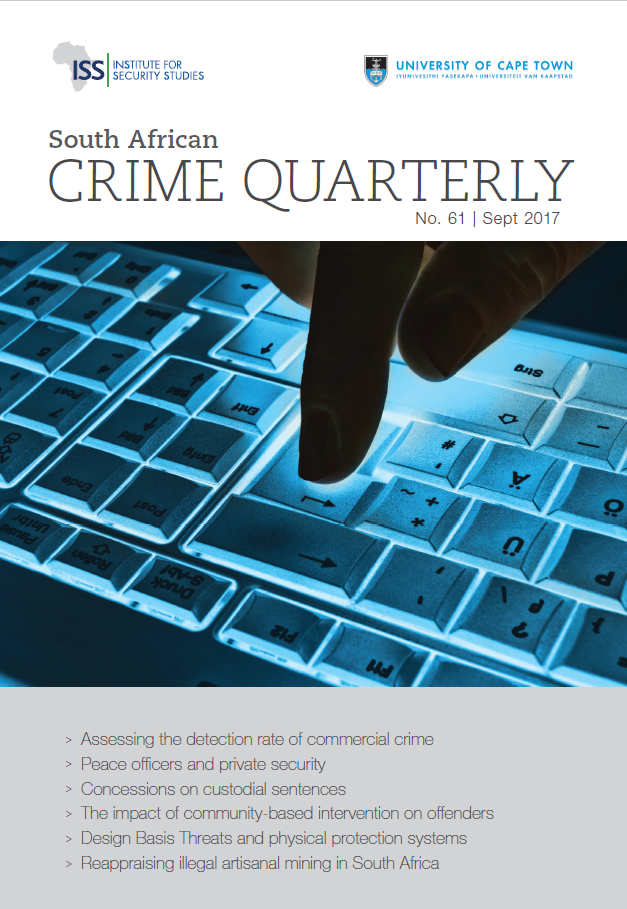
September
No. 61 (2017)SACQ 61 covers a range of topics, from police investigations of commercial crimes to restorative justice and illegal mining. In our first of five research articles, Trevor Budhram and Nicolaas Geldenhuys use SAPS performance data to suggest that police are losing the battle against commercial crime. With a focus on detection rates, they convincingly argue that the SAPS’ performance is unjustifiably weak, and that this is hidden by the way it captures performance data.
Next, John Kole asks whether private security officers (PSO) could better support the SAPS’ crime prevention mandate if they had more legal authority. He explores this through data from interviews and a survey carried out with senior private security and SAPS managers, as well as with operational officers, and is surprised at what he finds.
Emma Lubaale compares judgements in South African and New Zealand criminal court cases, asking whether South African courts should better balance custodial and restorative justice sentences. She suggests that South African courts incorrectly perceive restorative justice sentences as weak .
In his article, Sean Larner takes us inside the Rebuilding and Life Skills Training Centre (Realistic) in Gugulethu, Cape Town, and into the lives of some of the young ex-offenders who have been through its programmes. Using in-depth interviews, he explores the obstacles faced by young ex-offenders and the impact of Realistic’s reintegration programme.
Have you heard of a Design Basis Threat (DBT)? If not, Cyrus Cyril Arwui, Victor Tshivhase and Rudolph Nchodu article offers insight into the formulation of DBT statements for nuclear facilities. DBT’s are recommended by the International Atomic Energy Agency (IAEA) as a methodology to secure radioactive sites. Readers may be surprised by the types of data used and assumptions made in the formulation of a DBT, including a reliance on reported crime numbers (not rates) in nearby towns.
Finally, in a commentary and analysis piece, Mbekezeli Mkhize reviews the challenges and opportunities posed by illegal artisanal (small scale) mining in South Africa.
-
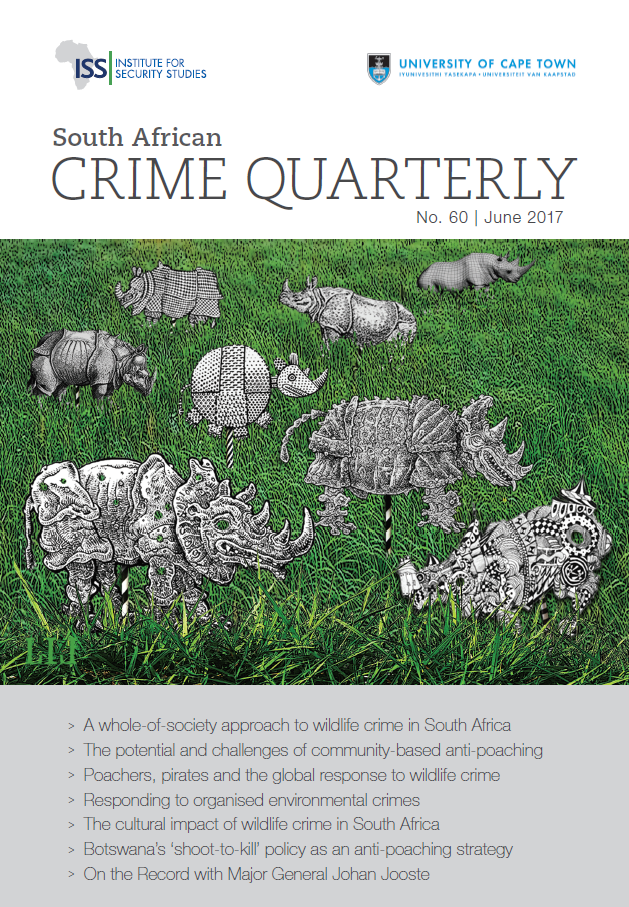
June 2017
No. 60 (2017)This issue of South African Crime Quarterly is a special issue dedicated to organised environmental crimes. It is guest edited by Annette Hübschle of the Environmental Futures Project, Institute for Safety Governance and Criminology at the University of Cape Town, and funded by the Global Initiative for Transnational Organised Crime.
Once considered peripheral matter, wildlife crimes have moved up global security and policy agendas. The UN General Assembly, for example, adopted two resolutions to tackle wildlife crimes in 2015 and 2016, while South Africa and the Southern African Development Community (SADC) have declared wildlife trafficking a priority crime issue. Nevertheless, a plethora of protective and regulatory measures has failed to disrupt the consumer markets and criminal networks that allow these trades to flourish. Several contributions to this issue suggest that for such measures to have an impact, they must be implemented and shared by a range of networked stakeholders. One contribution suggests that a ‘whole of society’ approach is best suited to the task, while others suggest there are lessons to be learned from the global response to Somlai piracy, and from INTERPOL’s National Environmental Security Taskforce (NEST) model.
An empirical contribution offers insight into the lives of anti-poaching community scouts working in southern Mozambique, adjacent to South Africa’s Kruger park. It describes the social stigma and exclusion that some scouts encounter in their communities and suggests that such programmes will only be effective when wildlife economies produce clear benefits for local communities.
Two commentary pieces challenge conventional thinking on wildlife crime. One argues that the crime-related loss of natural resources, such as rhino, should be considered a form of cultural victimization against people, while another argues that rangers should ‘shoot-to-kill’ poachers in protected parks. In the ‘On the Record’ feature, the head of the South African National Parks’ Special Projects (anti-poaching) team, Major General Johan Jooste (Ret.), reflects on the challenges of law-enforcement in South Africa’s Kruger National Park, including whether ‘shoot-to-kill’ has any merit.
-
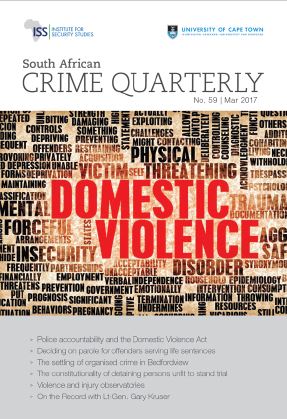
March 2017
No. 59 (2017)Research articles explore adherence to, and implementation of, duties placed on police by the 1998 Domestic Violence Act; the discretion of the Minister of Justice and Constitutional Affairs to refuse parole to those serving life sentences; and why organised crime figures choose to live and work in some areas rather than others.
A case note examines the treatment of an accused person who, due to mental illness, is unfit to stand trial but is still required by law to be detained, and a review essay considers the potential of the ‘violence observatory’ model for South Africa.
The issue ends with an On the Record interview with South African Police Service (SAPS) Deputy-National Commissioner, Gary Kruser, who explains the organisation’s new management intervention capacity and strategy.
-
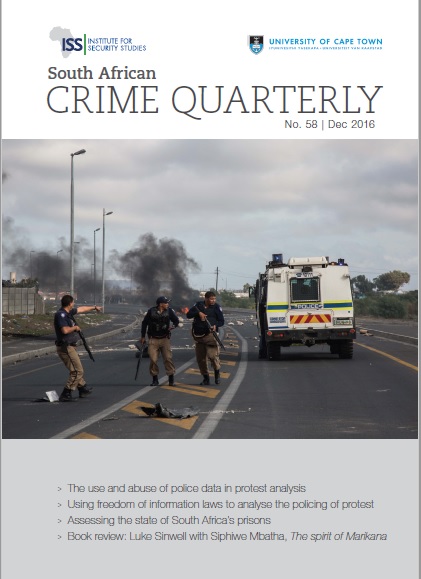
December 2016
No. 58 (2016)In the three months since the publication of South African Crime Quarterly (SACQ) 57, South Africa’s tertiary education, prosecutorial and political landscapes have been shaken, perhaps irrecoverably. Although we cannot predict how it will all turn out, change is certainly afoot. So too with SACQ.
This issue of SACQ marks the end of a path-breaking era for the journal. We offer our heartfelt thanks and a fond farewell to our long-time editor and champion, Chandré Gould. Over the past decade, Chandré has worked tirelessly to grow the quality and reach of the journal, ensuring the publication of valuable research on crime and justice-related matters pertinent to South Africa. She has ensured that SACQ has been produced in a format that is both elegant and easily accessible and digestible to a broad readership. In the process, she has facilitated the commitment of over 200 articles, reviews, commentaries and interviews to South Africa’s research record, and helped foster a new generation of researchers.
-
September 2016
No. 57 (2016)This issue covers some of South Africa’s hottest topics, as well as its broader structural challenges. Mary de Haas analyses political killings in KwaZulu-Natal in the run up to the August 2016 municipal elections. In On the Record, National Director of Public Prosecutions, Shaun Abrahams, provides unique insight into the challenges of heading the prosecution service in a fraught political climate.
Exploring the broader criminal justice arena, Ehmke-Engelbrecht et al. question the validity of blood alcohol samples used in the prosecution of alleged drunk drivers. In two legal contributions, Jameelah Omar argues that poor people suffer discrimination in court when it comes to bail; Marelize Schoeman assesses current procedural mechanisms to assess the criminal capacity of children in conflict with the law. Jean Steyn and Sazelo Mkhize ask whether police officers’ attitudes change with years of service, and Elrena van der Spuy reviews Don Pinnock’s book Gang Town.
-
June 2016
No. 56 (2016)This is the first issue in a new partnership between the Institute for Security Studies (ISS) and the University of Cape Town (UCT) as co-custodians of the South African Crime Quarterly (SACQ). We believe that the UCT Centre of Criminology’s commitment to advancing policy-relevant research and analysis on public safety, criminal justice and evolving forms of crime in South Africa, and the global South more broadly, complements the SACQ’s objective of contributing balance and objectivity to the discourse on human security in Africa. Both institutions are committed to ensuring that SACQ remains an accessible source of up-to-date policy-relevant research and analysis.
In this issue we revisit some of the key intersections of daily crime and violence affecting some of South Africa’s most vulnerable groups. We begin with an article by Mogstad, Dryding and Fiorotto exploring the challenges and limitations of policing domestic violence in Khayelitsha, Cape Town. Carolyn Agboola then reports on interviews with women who had been released from correctional facilities, documenting their claims of poor health care, sanitation, food, access to education and overcrowding. An article by Lancaster and Kamman explores the hypothesis that risk of murder is associated with particular demographic and contextual characteristics, and Jamil Mujuzi’c contribution ponders changes to Zimbabwe’s Criminal Procedure and Evidence Act in relation to private prosecutions. We end with an ‘On the Record’ interview with the Social Justice Coalition’s General Secretary, Phumeza Mlungwana, about crime and policing in Khayelitsha.
-
March 2016
No. 55 (2016)The March 2016 edition of South African Crime Quarterly is a special edition dedicated to exploring the role of social cohesion and collective efficacy in addressing violence in cities in the global south.
Social cohesion is a broad concept but generally refers to the factors that ‘hold a society together’. Collective efficacy looks at how these ties can prevent violence when they are translated into collective action at the neighbourhood level.
Rapid urbanisation in the developing world is thought to exacerbate and concentrate the linkages between poverty, inequality and violence in rapidly expanding cities. It has been hypothesised that weak social cohesion increases the risk that violence will occur, while strong social cohesion can act as a protective factor preventing violence. Thus far, however, there has been little empirical research on social cohesion and its relationship to violence in the global south.
This edition will include articles that present research findings on these issues. It locates itself within a growing body of intellectual and policy engagement on safety in rapidly growing cities in the global south. The deadline for abstracts has passed. The deadline for articles to be considered for publication is 15 November 2015.
-
December 2015
No. 54 (2015) -
September 2015
No. 53 (2015) -
June 2015
No. 52 (2015) -
September 2014
No. 49 (2014) -
March 2014
No. 47 (2014) -
March 2012
No. 39 (2012) -
December 2011
No. 38 (2011) -
July 2011
No. 36 (2011) -
December 2010
No. 34 (2010) -
September 2010
No. 33 (2010) -
June 2010
No. 32 (2010) -
March 2010
No. 31 (2010) -
December 2009
No. 30 (2009) -
September 2009
No. 29 (2009) -
June 2009
No. 28 (2009) -
March 2009
No. 27 (2009) -
September 2008
No. 25 (2008) -
June 2008
No. 24 (2008) -
March 2008
No. 23 (2008) -
December 2007
No. 22 (2007) -
September 2007
No. 21 (2007) -
June 2007
No. 20 (2007) -
March 2007
No. 19 (2007) -
December 2006
No. 18 (2006) -
September 2006
No. 17 (2006) -
June 2006
No. 16 (2006) -
March 2006
No. 15 (2006) -
December 2005
No. 14 (2005) -
September 2005
No. 13 (2005) -
June 2005
No. 12 (2005) -
March 2005
No. 11 (2005) -
December 2004
No. 10 (2004) -
September 2004
No. 9 (2004) -
June 2004
No. 8 (2004) -
March 2004
No. 7 (2004) -
December 2003
No. 6 (2003) -
September 2003
No. 5 (2003) -
June 2003
No. 4 (2003) -
March 2003
No. 3 (2003) -
November 2002
No. 2 (2002) -
June 2002
No. 1 (2002)

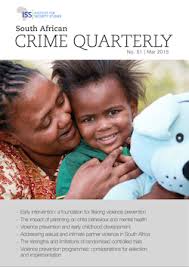
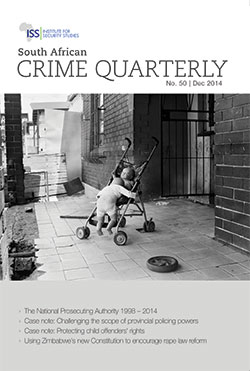
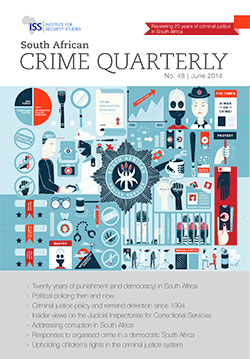
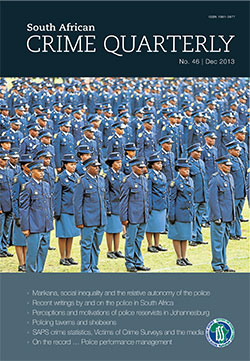
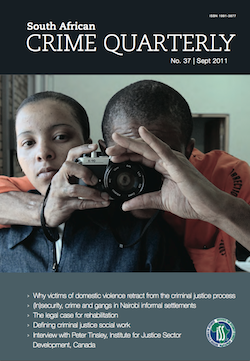
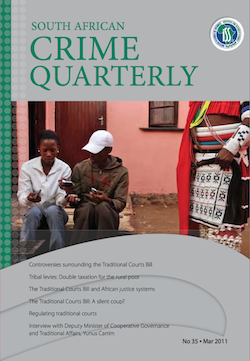
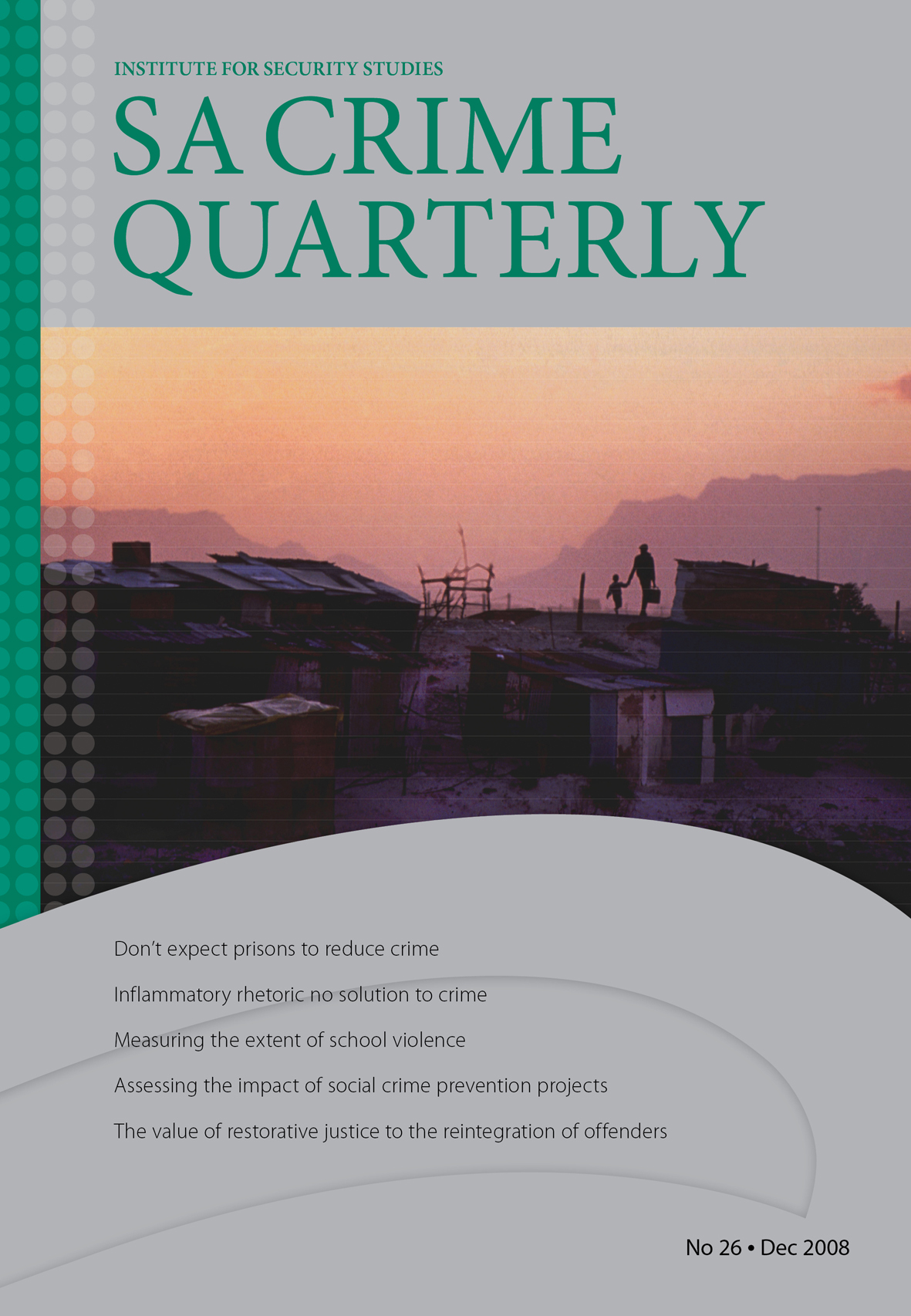
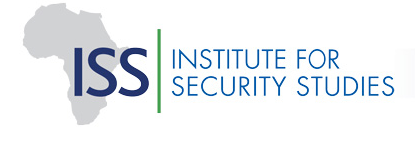
.png)